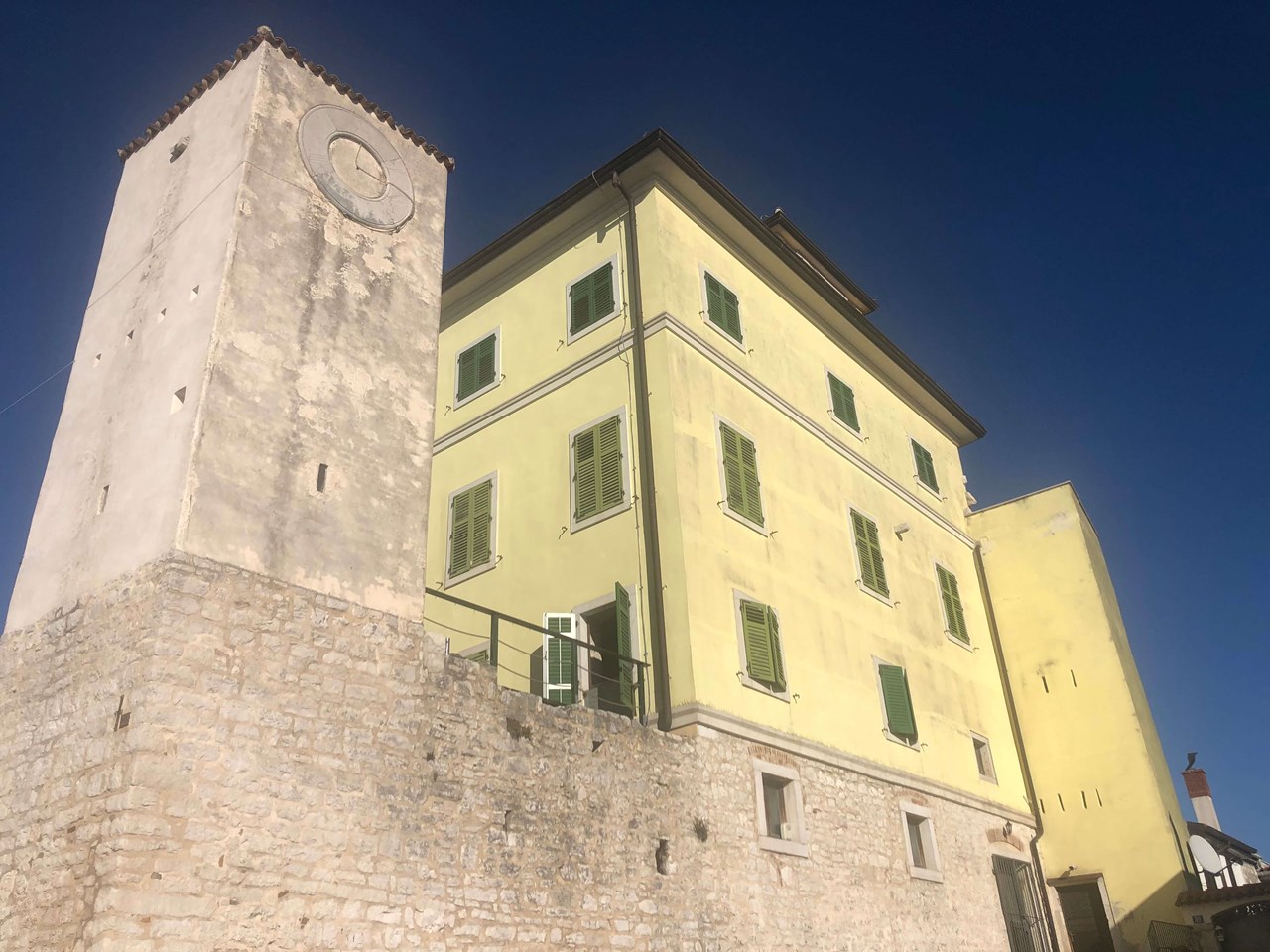The Vrsar castle is a former palace and residence of the bishop of Poreč who ruled Vrsar from the 6th century until 1778. Today’s castle is basically a medieval building that was extended and baroquised in the 17th century. With the establishment of the Venetian reign in 1778, the castle was taken away from the Church and laicised. In the 19th century, it came under the ownership of the Vergottini family. The castle was renovated in 2001, and today it serves as a privately owned residential property in the country.
The Vrsar castle is a former palace and residence of the bishop of Poreč who ruled Vrsar for over 1000 years.

The building dominates the townscape of Vrsar, and is clearly visible from the east entrance into the town, from the open sea and from the island of Sveti Juraj. It is the tallest and largest historical building in Vrsar.
The oldest castle in Vrsar was built on this location in the 9th century and was surely smaller than today. In archival sources, the first mention of the Vrsar castle was in the 12th century under the name castrum Ursariae. After its construction, the castle was the seat of the Duchy of Vrsar, but also the place in which the bishops of Poreč drafted many documents throughout the Middle Ages and Modern Period. That first castle was refurbished by Otto, Bishop of Poreč (1256-1282). It is known that the Vrsar castle was situated on the highest point of the settlement, and that it had characteristics of a fort. As such, it was also depicted in paintings of townscapes in the Modern Period. The castle was completely refurbished, baroquised and extended during the time of A. Adelassi, Bishop of Poreč, in the 17th century. The castle had a defensive wall with Romanesque turrets, embrasures, a residential area and stables. The castle was laicised and nationalised in 1778 within the framework of the Venetian government’s policies. In the 19th century, the castle came under the ownership of the Vergottini family. The castle was a regular residence of the bishop of Poreč, particularly during wars, epidemics and turmoil. After the Duchy of Vrsar ceased to exist in 1778 and its nationalisation, the castle gradually fell into ruin. It was restored in 2001 and serves today as a privately owned residential property in the country.
In the documented history of Vrsar, its castle is certainly the most mentioned and most important building.
In the documented history of Vrsar, its castle is certainly the most mentioned and most important building. It was the seat of the bishop of Poreč, many documents crucial for the history of Vrsar and the area around it were drafted in it, and it is significant for Istria as a whole. It was an oppidum, i.e. castrum, in the full sense of the word, having developed from a late Antiquity or early Middle Ages refuge (refugium). In old documents, the term castrum Vrsarie should be considered carefully since it denotes both the Vrsar castle itself and the very residential core of the old town, located within the walls.
The Vrsar castle is merely a part of the ambient environment of the top of the Vrsar hill constituted by the parish church, bell tower and nearby lookout point. From that location, streets descent toward the Great Gate, municipal square, Small Gate and other parts of the old Vrsar.